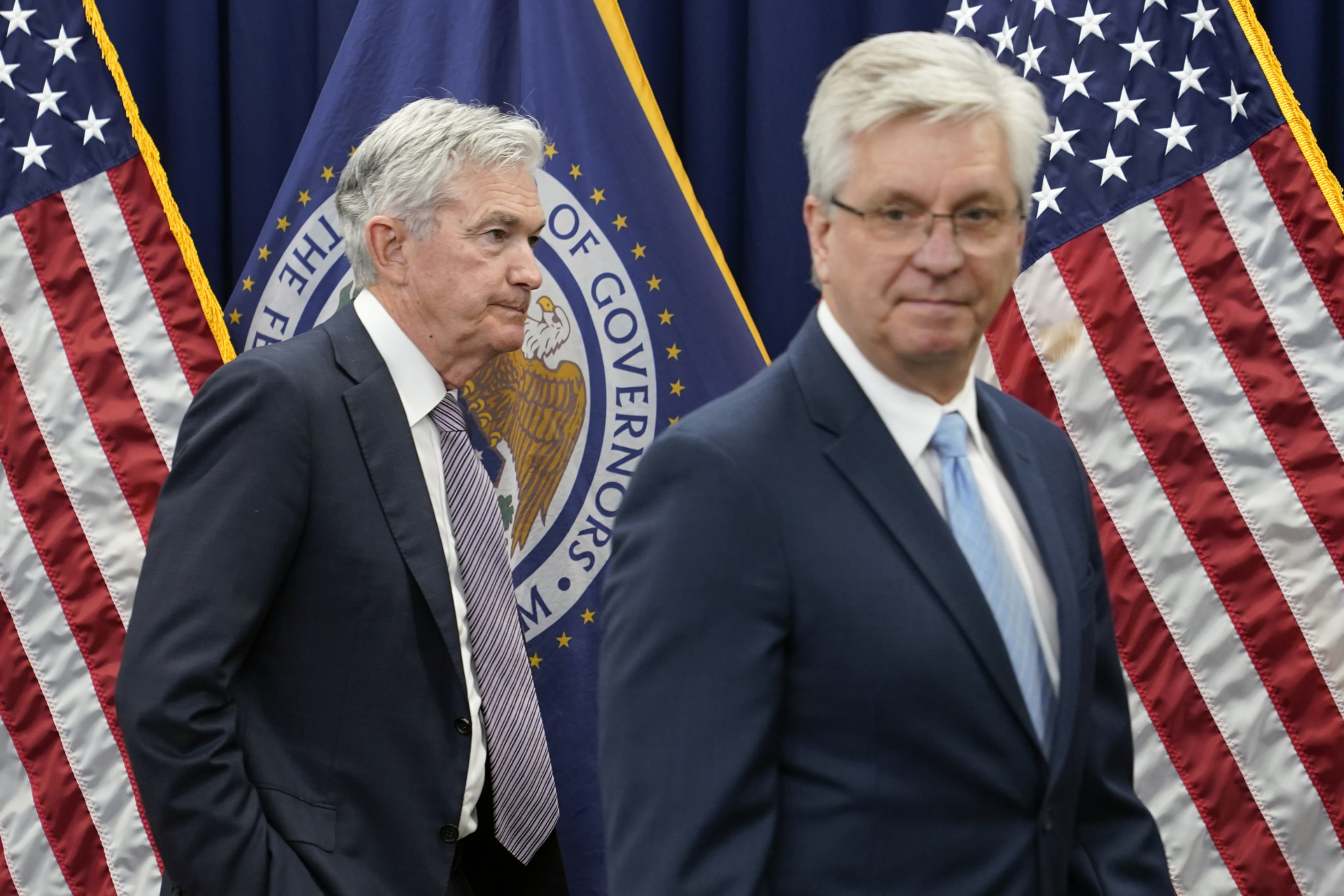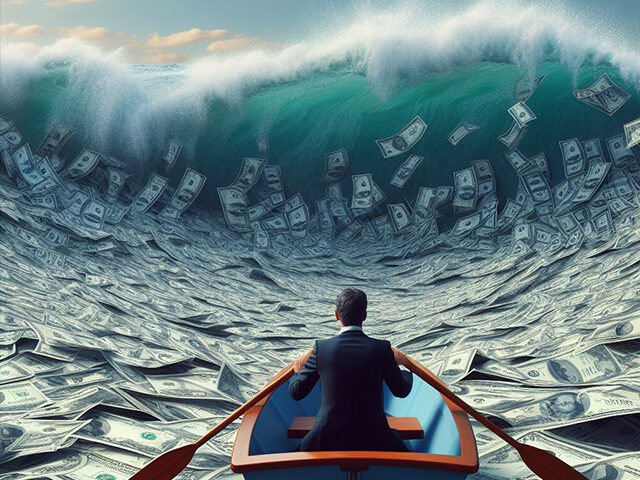Waller Warns That Something’s Got to Give
The Federal Reserve is not buying the optimism about the economy that the White House has been marketing under the brand Bidenomics.
In speeches this week, Federal Reserve officials made it very clear that they plan to hold their benchmark interest rate target steady at the Federal Open Market Committee (FOMC) meeting the week after next. Fed Chairman Jerome Powell locked-in a pause when he defied predictions that he would strike a slightly more hawkish tone in his speech Thursday.
Going into the week, markets were pricing in less than a 20 percent chance of a hike. If Fed officials felt this view was mistaken, they had plenty of opportunities to correct it in one of the dozen or so speeches, talks, and interviews they gave this week. Just the fact that none appeared to attempt a correction is an indicator that the Fed—which has shown a distaste for surprising the market when it hikes—is in agreement on that point.
Fed officials sent a secondary message in their recent appearances that received less attention. The clearest form of this came in the title of Fed Governor Christopher Waller‘s talk in London: “Something’s Got To Give.”

Federal Reserve Board Chair Jerome Powell, left, with Christopher Waller on May 23, 2022, in Washington, DC. (AP Photo/Patrick Semansky)
Waller noted that inflation had come down toward the Fed’s target this year even while employment had stayed high and growth robust, a development he describes as “overwhelmingly positive” for both the Fed’s employment and price stability goals. He noted, however, that “things are looking a little too good to be true.”
“This is great news, and while I tend to be an optimist, things are looking a little too good to be true; so it makes me think that something’s gotta give. Either growth moderates, fostering conditions that support continued progress toward our two percent inflation objective, or growth doesn’t, possibly undermining that progress. But which is going to give—the real side of the economy or the nominal side?” Waller said.
In other words, either growth would have to slow down or inflation was likely to rise again.
Waller elaborated:
I find myself thinking about two possible scenarios for the economy in the coming months. In the first, the real side of the economy slows. This is the scenario broadly reflected in the September Summary of Economic Projections (SEP) by FOMC participants, where an easing in demand helps bring the economy into better balance with supply and allows inflation to move closer to our 2 percent objective. In this scenario, I believe we can hold the policy rate steady and let the economy evolve in the desired manner.
But I also can’t avoid thinking about the second scenario, where demand and economic activity continue at their recent pace, possibly putting persistent upward pressure on inflation and stalling or even reversing progress toward 2 percent. In such a scenario, failing to take action in a timely way carries the considerable risk of undermining what have been fairly stable inflation expectations and possibly unwinding the work that we have done to date. Thus, more action would be needed on the policy rate to ensure that inflation moves back to target and expectations remain anchored.
Waller next pointed out that real economic activity has accelerated in recent months, specifically pointing to the Blue Chip survey of business forecasters third-quarter real GDP forecast of 3.5 percent growth. He also mentioned the Atlanta Fed’s GDPNow model “coming in even higher,” although he declined to point out that it was coming in at 5.4 percent growth.
“We’ll get a first look at the third quarter GDP number next week, but it seems clear that economic activity was substantially higher for July through September than earlier in the year,” Waller said.
Slower Growth or More Inflation and Higher Rates
So, the question will be what happens in the fourth quarter of this year and the first quarter of next year. Will the acceleration of the economy be sustained, keeping unemployment low? Is the third-quarter’s growth evidence of persistently higher demand? If the answer to those questions is in the affirmative, according to Waller, inflation is likely to return.
“[I]f the third quarter data represents the beginning of persistently stronger demand, then we can expect that strength to show up in the fourth-quarter data, including by putting upward pressure on prices, which could have ramifications for upcoming decisions on monetary policy,” Waller said.
Although Waller did not explicitly say this, it would be wise for the Fed not to wait until it sees inflation actually rising before it begins raising rates again. The “wait till you see the whites of their eyes” strategy was one of the failures that got us runaway inflation in the first place. If Fed officials are convinced that persistently higher growth will reignite inflation, they should act to tamp down on the growth and not wait until the official inflation indexes rise.
The other possibility is that growth slows on its own, which would help keep inflation down, as Waller also noted in his speech:
Sometimes an uptick in activity is followed by some payback, or slowdown. For example, if firms pull construction forward because of good weather, then current structures investment will be high now but lower in the next period. Thus, we want to be careful and not pay too much attention to the specific month activity took place but instead average growth over a couple of quarters to get a clearer picture of the underlying strength of the economy.
To see this point more clearly, recall that at the start of this year, personal consumption expenditures increased dramatically in the first quarter but subsequently grew less rapidly in Q2 of 2023. A similar dynamic may be playing out now.
The slow growth payback is the scenario economists are forecasting right now. The most recent survey by Bloomberg shows economists expect the economy to grow at a 0.7 percent annualized rate in the fourth quarter, 0.4 percent in the first quarter of next year, and 0.6 percent in the second quarter. The forecasts in the Wall Street Journal‘s survey of top economists are similar: 0.9 percent in the fourth quarter, 0.4 percent in the first quarter, and 0.6 percent in the second quarter.
The bond market, however, seems to disagree. Rapidly rising bond yields over the past few weeks—the 10 year rose above five percent for a time on Friday—would suggest that investors expect growth to continue at a stronger pace and are pricing in more inflation.
“The bond market is starting to price in structurally higher inflation,” SMBC Nikko Securities Chief Economist Joe Lavorgna wrote in a client note on Friday. “Consequently, the Fed may have to raise rates more, and the slowdown in the economy may have to be deeper and longer than some project.”
This is not just the view of Waller, of course. In a slightly less explicit form, Powell said the same thing on Thursday.
“Still, the record suggests that a sustainable return to our 2 percent inflation goal is likely to require a period of below-trend growth and some further softening in labor market conditions,” Powell said.
In other words: to get inflation down, the economy will need to slow.
Bad News for Bidenomics
Either outcome is probably bad news from the perspective of those busily touting the achievements of Bidenomics. Either growth slows to a glacial pace in the crucial months leading up to the election, likely resulting in rising unemployment and renewed recession worries, or growth continues at a pace fast enough to force the Fed to raise rates to stave off a second wave of inflation.
Taking the longer view, the high growth into 2024 is probably the worst scenario for a Biden successor or Biden’s second term. As Lavorgna points out, the Fed’s reaction to higher growth will cause a tightening that may lead to a deeper and longer downturn in the economy. A slowdown into 2024, on the other hand, would probably indicate faster growth in 2025, the first year of the next presidency or Biden’s second term.

COMMENTS
Please let us know if you're having issues with commenting.